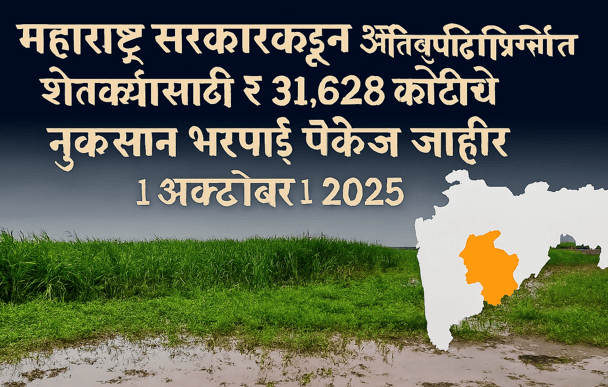Rising Use of Biofertilizers in Indian Agriculture
India’s agricultural sector is undergoing a green transformation, as farmers increasingly turn to biofertilizers to boost soil fertility and promote sustainable crop production. With climate change, soil degradation, and overuse of chemical fertilizers posing serious challenges, biofertilizers have emerged as an effective, eco-friendly alternative.
The increasing focus on sustainable agriculture is also opening new opportunities for startups and rural entrepreneurs in the biofertilizer industry. Local production units are being set up under government-backed schemes, creating employment while reducing transportation costs. Farmers’ cooperatives are also joining hands with agri-tech firms to promote on-field demonstrations and training workshops. With better education and access to technology, more farmers are understanding the long-term benefits of using biofertilizers. This growing ecosystem — combining innovation, government support, and farmer participation — is expected to transform Indian agriculture into a more resilient, eco-friendly, and profitable system in the coming decade.
According to the National Centre for Organic Farming (NCOF), the use of biofertilizers in India has grown by over 18% annually in the past three years, particularly in states such as Maharashtra, Madhya Pradesh, and Tamil Nadu. This surge is driven by government subsidies, farmer awareness campaigns, and the growing demand for organic produce.
Key Drivers of Growth
India’s soils are losing fertility due to decades of chemical-intensive farming. As a result, biofertilizers — which use living microorganisms to enhance nutrient availability — are now a crucial part of modern agriculture.
The major drivers behind this trend include:
- Declining soil health due to excessive urea and DAP usage.
- Rising input costs of synthetic fertilizers.
- Government incentives under the National Mission on Sustainable Agriculture (NMSA).
- Consumer preference for organic and chemical-free food.
New Biofertilizer Products in the Market
| Product | Company | Microorganism Type | Target Crop | Function |
|---|---|---|---|---|
| RhizoGrow™ | BioBridge Agrotech | Rhizobium-based | Pulses, Soybean | Nitrogen fixation |
| GreenBoost® | AgriLife Biotech | Azospirillum | Maize, Wheat | Root development, nitrogen supply |
| PhosMax | T. Stanes & Co. | Phosphate-solubilizing bacteria | Rice, Cotton | Improves phosphorus uptake |
| BioN-Power™ | Zuari Agri Sciences | Mixed microbial consortium | Vegetables | Multi-nutrient enrichment |
| MycoRoot® | Coromandel | Mycorrhiza-based | Sugarcane, Banana | Enhances water and nutrient absorption |
Eco-Friendly Farming on the Rise
As India pushes for organic certification and sustainable agriculture, biofertilizers are becoming the preferred choice among progressive farmers. These products not only improve soil health but also reduce the carbon footprint associated with fertilizer manufacturing.
Several initiatives, including Paramparagat Krishi Vikas Yojana (PKVY) and PM-PRANAM Scheme, are promoting bio-inputs and reducing chemical dependency. Private players like Biotech International, Kan Biosys, and Agrinos are investing heavily in R&D to create robust microbial strains suited to India’s diverse agro-climatic conditions.
Government Support & Policy Updates
The Indian government has rolled out multiple programs to promote biofertilizer adoption:
- Subsidies for certified biofertilizer units under NCOF guidelines.
- Inclusion in FCO (Fertilizer Control Order) 2021 for quality regulation.
- Awareness campaigns by ICAR and Krishi Vigyan Kendras (KVKs).
- Soil Health Card Mission, recommending biofertilizers based on soil type.
These efforts are expected to bring an additional 2 million hectares under biofertilizer-based nutrient management by 2027.
Challenges in Adoption
Despite progress, challenges remain in scaling up biofertilizer usage:
- Lack of proper storage and transportation infrastructure.
- Short shelf life of microbial products in hot climates.
- Limited farmer knowledge about strain compatibility and dosage.
Experts emphasize the need for stronger public-private partnerships and digital advisory platforms to guide farmers in selecting and applying biofertilizers effectively.
FAQs
Which crops benefit most from biofertilizers?
Crops like pulses, oilseeds, cereals, and vegetables show higher yield and better soil health when treated with suitable biofertilizers.
Can biofertilizers replace chemical fertilizers completely?
Not entirely — they work best in combination with organic manure and balanced nutrient management practices.
How can farmers purchase biofertilizers?
Certified products are available through Krishi Vigyan Kendras, government cooperatives, and online agri platforms like IFFCO eBazar.
Are biofertilizers cost-effective?
Yes, they reduce the need for costly chemical inputs and improve soil health in the long term.
What are the risks of using poor-quality biofertilizers?
Low-quality or expired biofertilizers can reduce crop performance and introduce unwanted microbes into the soil.




















